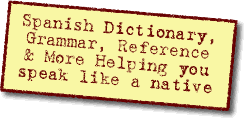There are lots of correct translations for this song on the internet.
hay = there is
no hay = there isn't
no hay nada = there's nothing (literally 'there isn't nothing' - double negative is OK)
no hay nada que = there's nothing that ('that' is not required in English, but is in Spanish)
Next comes 'can say'. The first word is an auxiliary, or helping, verb in English and it is followed by the bare infinitive 'say' (bare infinitive is an English grammar term).
In Spanish, you wrote '
puedes' for the first word. This is the present tense conjugation of '
poder'. You used the second person conjugation. All good thinking, for the indicative mood, but I'll tell you in a bit what else you need to think about. The second word you wrote is '
dices'. This should have been the infinitive '
decir' instead of a second conjugated verb (two conjugated verbs in a row never happens). So, just like in English, you conjugate the auxiliary verb and an infinitive follows it.
Now, the part you haven't learned yet. Because the idea/thing you're talking about doesn't exist ("there is
nothing"), you need to use the subjunctive mood instead of the indicative mood. I told you before that you correctly used the indicative mood form of the auxiliary verb. However, the subjunctive mood is needed, so you should use '
puedas' instead of '
puedes'.
no hay nada que puedas decir = there's nothing (that) you can say
o hacer = or do (bare infinitive needed instead of a conjugated verb - it goes with the auxiliary verb)
por mí = for me

(you got this part right)

Any questions, just ask.
Welcome to the forums, by the way!



 Similar Threads
Similar Threads







 (you got this part right)
(you got this part right) 
